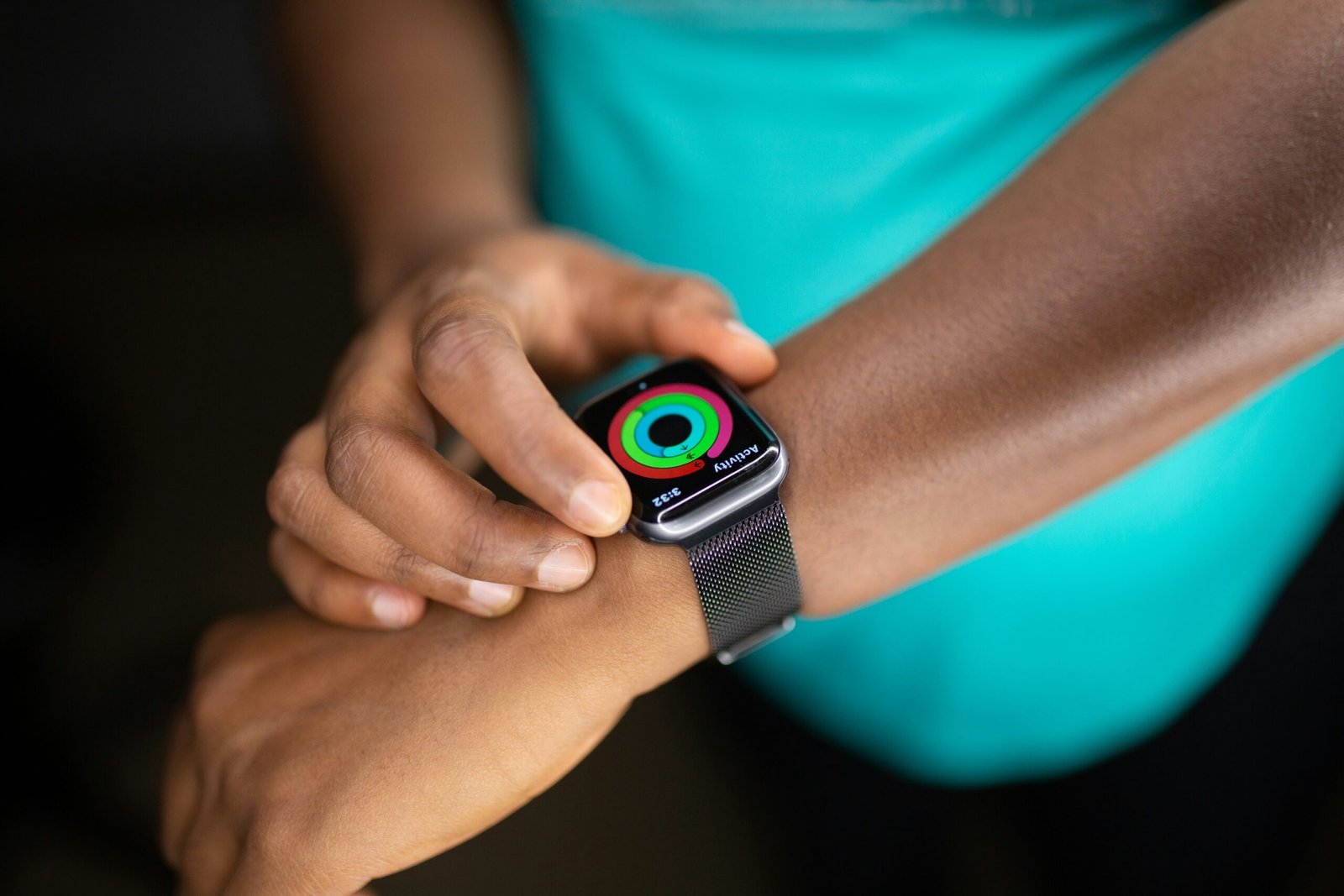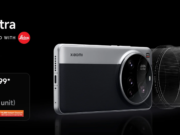
Introduction to Apple’s Dominance in Wearable Technology
Wearable technology has witnessed an extraordinary evolution over the past decade, reshaping how individuals interact with their devices and manage their health. Among the myriad offerings in this burgeoning sector, Apple has emerged as a formidable leader with the introduction and subsequent development of the Apple Watch. Launched in April 2015, this innovative smartwatch marked Apple’s entry into a new segment of consumer electronics, further expanding its ecosystem of products.
The Apple Watch was designed not only as a timekeeping device but also as a health-monitoring tool, featuring apps and sensors that track fitness metrics, heart rate, and various health parameters. Its seamless integration with the broader Apple ecosystem, including the iPhone, has contributed significantly to its success. By offering functionalities that appeal to both fitness enthusiasts and everyday users, the Apple Watch quickly carved out a substantial market share, establishing itself as the best-selling smartwatch globally.
Recent statistics underscore Apple’s dominance in the wearable technology market. As of 2023, the Apple Watch accounted for nearly 30% of the global smartwatch market, consistently outperforming competitors such as Samsung, Garmin, and Fitbit. Market research indicates that Apple continues to innovate, regularly introducing new features such as blood oxygen monitoring, ECG capabilities, and the incorporation of fitness tracking technologies. These enhancements align with the rising consumer demand for smart wearables that promote health and well-being.
In light of these advancements, Apple’s ongoing commitment to enhancing the Apple Watch’s functionality demonstrates its strategic focus on fostering personal health management through technology. As wearables continue to adapt and gain popularity, Apple’s position as a leader in this space remains acute, paving the way for the next generation of devices that merge convenience, connectivity, and wellness.
Key Features and Innovations of the Apple Watch
The Apple Watch is widely recognized for its impressive array of features and innovations that distinguish it from other wearable devices on the market. Among its standout offerings is the advanced health and fitness tracking capabilities. Apple has embedded various sensors within the watch that allow users to monitor heart rate continuously, track workouts ranging from running to swimming, and even measure the calories burned throughout the day. These features contribute not only to fitness motivation but also promote a healthier lifestyle.
Another significant innovation lies in the Apple Watch’s integration with the broader Apple ecosystem. The seamless connectivity with iPhones and other Apple products enhances user convenience. Notifications, calls, and messages can be accessed directly from the wrist, which fosters an uninterrupted workflow and increases overall productivity. This connectivity is further amplified by the availability of various third-party apps that expand the device’s functionality, catering to diverse user preferences.
The Apple Watch also boasts customizable watch faces, allowing users to adapt the aesthetic and functionality according to their individual styles and needs. This personalization makes the watch not only a functional gadget but a fashionable accessory as well. Users can choose from numerous designs, colors, and complications that depict pertinent information like weather updates, calendar events, and fitness metrics at a glance.
Recent advancements, such as the electrocardiogram (ECG) and blood oxygen monitoring, have revolutionized personal health management. These features enable users to take proactive steps in monitoring their health, providing invaluable data that can be shared with healthcare professionals. Testimonials from real users illustrate how these capabilities have facilitated early detection of potential health issues and improved overall wellbeing.
Through its cutting-edge features and inherent versatility, the Apple Watch solidifies its status as a leading wearable technology choice, catering to both health-conscious individuals and those seeking a highly functional smartwatch.
The Apple Watch Series Evolution: What’s New in the Latest Model
The Apple Watch series has undergone remarkable evolution since its initial launch in April 2015. Each new iteration has brought significant enhancements that cater to the needs of a growing user base. The very first model set the foundation for a revolutionary wearable device, focusing on fitness tracking and notifications. With the subsequent generations, Apple introduced improved health monitoring capabilities, more robust app integration, and refined design aesthetics.
The latest model, the Apple Watch Series 9, showcases Apple’s commitment to innovation. Featuring a sleek design, it is available in various materials, including aluminum and stainless steel, which offer both style and durability. One of its most significant advancements is the upgraded S9 SiP (System in Package), which enhances performance, enabling faster processing speeds and improved energy efficiency. This allows users to experience smoother functionality and quicker app responses.
In terms of health features, the Series 9 continues to expand upon its predecessors’ offerings. New sensors have been incorporated to enhance heart rate monitoring and blood oxygen levels, providing users with comprehensive health insights. Additionally, the watchOS updates allow for more personalized notifications and customizable watch faces, catering to individual preferences.
The battery life remains a hallmark of the Apple Watch series, with the Series 9 boasting a battery that lasts up to 18 hours on a single charge. This longevity proves beneficial for users who rely on their device throughout the day while engaging in various activities. Feedback from users indicates that the enhancements have undeniably improved the overall experience, reinforcing Apple’s position as a leader in the wearable technology market.
In conclusion, the evolution of the Apple Watch series exemplifies Apple’s dedication to continuous improvement and user satisfaction. The latest model not only builds upon previous advances but also sets new standards for what consumers can expect from wearable technology.
The Future of Apple Watch and Wearable Technology
The realm of wearable technology, particularly exemplified by the Apple Watch, is poised for significant evolution in the coming years. As consumer expectations and technological advancements align, it is anticipated that wearables will become increasingly integrated into daily life, merging seamlessly with other digital ecosystems. One of the key areas of growth for the Apple Watch is the advancement of health monitoring capabilities. Future iterations may incorporate cutting-edge biometric sensors that allow users to gain insights into their vitals and overall health in real-time. Innovations such as non-invasive glucose monitoring and enhanced heart rate analysis could position the Apple Watch not just as a fitness tool but as a vital health management device.
Moreover, the advent of augmented reality (AR) represents a promising frontier for wearables. Apple’s ongoing investments in AR technology suggest a potential shift in how users interact with their environment through wearable devices. The integration of AR could enable hands-free access to information, navigation, and social interactions directly through the Apple Watch. This shift may enhance user engagement by providing contextual information in real-time, thus expanding the functionality of the device beyond traditional applications.
Apple’s competitive strategy will also play a crucial role in shaping the future of the Apple Watch. By differentiating their products through unique features and a robust ecosystem, Apple aims to maintain its leadership position in the wearable technology market. However, challenges such as competition from other tech giants and evolving consumer preferences will necessitate continual innovation. Collaboration with health organizations and developers will be essential to unlock new applications and functionalities, ensuring the Apple Watch remains relevant and indispensable to users.
















